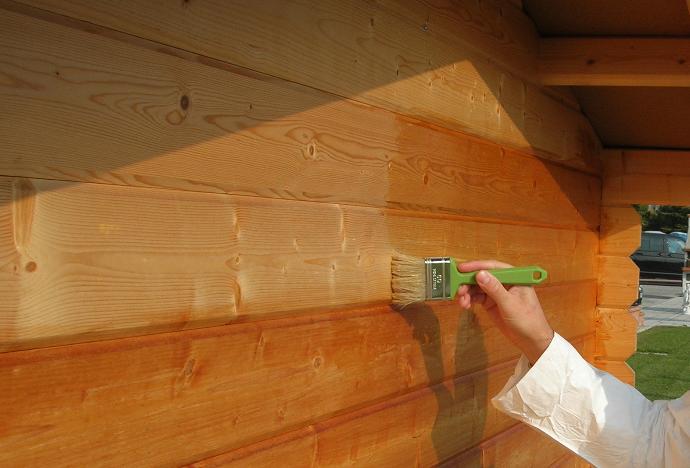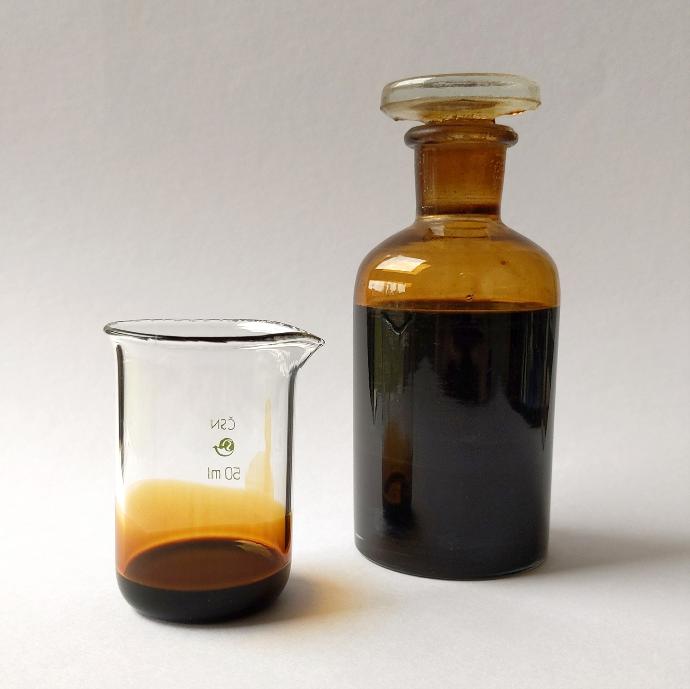Have you ever wondered what is inside a wood varnish or its effects on health and the environment? For sure, you have noticed
that some treatments last longer than others and therefore require less maintenance. Unfortunately, the best paints are also the most dangerous for humans and nature. At least, that's how it was until yesterday
.

Wood protection application.
Whether it's a paint, a primer or any other protective treatment for wood, we can find inside those components:
1. a polymeric binder.
2. a solvent or dispersant.
3. a pigment and possibly fillers.
4. various additives.
We know that solvents (point 2) are dangerous for health and the environment. Fortunately, more and more producers are replacing solvents with water-based products.
Be careful! There are two ways to use water in paint products: in water-based products, the water is the dispersing medium to replace the solvent completely; in water-soluble ones, water could "dilute" the paint but still contain solvents.
So how can I understand which one I am using? A good indicator could be the content of Volatile Organic Compounds (VOC). This value has to be indicated on the label. The closer it gets to zero, the healthier the product will be.
In addition to replacing the solvent with water, it is also necessary to think about the binder (Point 1), traditionally formed from resins derived from raw materials of fossil origin, such as oil.

Petroleum, at the base of the resins that make up the "standard" polymeric binder.
The resins (polymeric binder) are the essential and indispensable component of the painting system; they strongly affect the characteristics, performances, and duration.
There are various types of them, such as acrylic and vinyl resins used in wall paints, epoxy ones used to paint concrete floors, and many other types such as polyaspartic resins, methacrylates, and so on.
To protect the wood, one of the best solutions in terms of performance is polyurethane resin because it can provide flexible, tenacious films with good resistance to chemical attack and abrasion. It also does not yellow over time and has excellent durability even in the external wood.
Scientific research has identified a process for obtaining resins from plant origin, using vegetable oils such as soy, linseed, and cashew as raw materials. If you are curious, take a look at the projects of the European Community or the researches of universitie .

Everwood® Bio Varnish is a bio-polyurethane finish produced from renewable sources, organic polyurethane resins and bioemulsive resins.
With these bio-renewable resins, we have formulated an extraordinary protective varnish for wood based on bio-polyurethane. From renewable sources. Zero VOC. Performance at the highest level.
I wish you a promising sustainable future for all.
A Bio varnish for wood. A fairy tale?